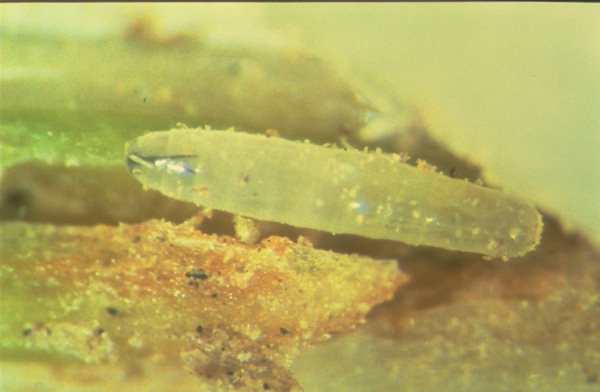
This weeks Pestwatch report, which is the last this season, indicates that egg-hatch for Wheat Bulb fly is now fully underway in Cambridgeshire and Suffolk, with some plant invasion taking place. Egg-hatch has also been detected in East Yorkshire.
Data from the weekly soil sampling published week-commencing the 8th March indicates that egg-hatch was between 19% and 47.4% on organic soils in Cambridgeshire, with up to 10.9% tiller invasion. Egg-hatch in Suffolk on mineral soils was 55.7% and in Yorkshire was at 50%, although the latter is based on low egg numbers.
Starting in January, results have been issued by Dow AgroSciences and ADAS as Pestwatch reports. These provide weekly data on Wheat Bulb fly egg-hatch and plant invasion and offer advice on the timely application of the soil insecticide Dursban WG. Weekly information can be accessed at www.dowagro.com/uk/cereal/pest/htm , with the last report being issued this week.
Sarah Hurry of Dow AgroSciences explains that the higher numbers of Wheat Bulb fly eggs found in autumn 2009 means that priority should be given to treat vulnerable fields with Dursban WG or Equity (chlorpyrifos) as soon as conditions allow. "South of the Humber sprays should be applied as soon as possible. North of the Humber, although egg-hatch has just started, it is likely to progress quickly so growers should be prepared to act. With the late start to the season this year, there will be a great deal of spraying to be done in a very short time. So it is advisable to assess fields at risk now and spray before the spring rush starts. An application of Dursban WG or Equity made now should last well into April to cover the delayed and prolonged egg-hatch. If necessary Dursban can be applied to frosty ground but should not be tank-mixed in this situation."
"Dursban is an effective soil insecticide and should be applied at egg-hatch at 1 kg/ha in 200-1000 litres of water. It will remain effective in the soil for 6-8 weeks under normal conditions, meaning that most larvae will be controlled as they hatch over the longer period of time happening this year. Optimum conditions for activity occur when soil temperatures are above 5 °C."
Dursban WG (75% w/w chlorpyrifos formulated as a Water Dispersible Granule) is recommended for the control of Wheat Bulb fly as well as Leatherjackets, Frit fly and Wheat Blossom Midge. For Wheat Bulb fly, two applications at dose rates of 1 kg/ha maybe applied. It is packed in a 1 kg pack.
Equity (480 g/l chlorpyrifos formulated as a Emulsifiable Concentrate) is also recommended for the treatment of Wheat Bulb fly at 1.5 l/ha in 200 to 1000 litres per hectare of water on fields in the highest category at egg-hatch.
